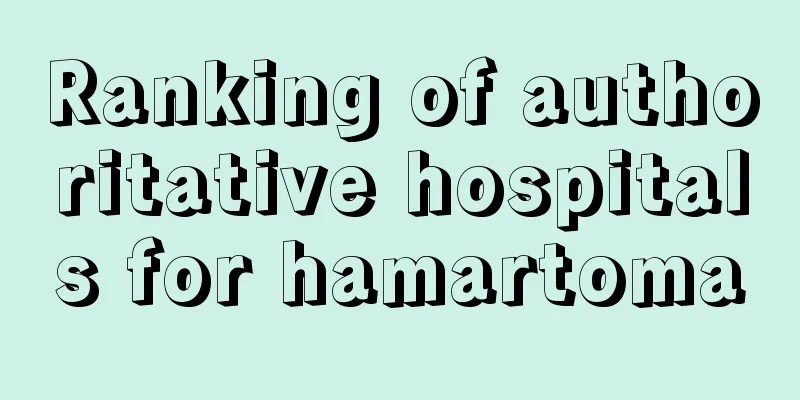What is the white color after tooth extraction

|
Many people will have a layer of white mucous membrane on the surface of the extraction wound after tooth extraction. This is a very common situation. This white mucous membrane is a kind of gingival soft tissue formed after tooth extraction. This is a normal situation. You need to pay more attention to the hygiene of the wound surface to avoid bacterial infection. At the same time, you need to remember to rinse your mouth after eating. What is the white thing after tooth extraction? There is a layer of white mucous membrane on the wound after tooth extraction. This is because the gum skin tissue originally connected to the tooth has insufficient blood supply and turned white. 2. The gingival tissue in the wound is somewhat inflamed and forms a white mucous membrane-like substance. Because the gums are severely traumatized after tooth extraction and the wound surface is easily infected by bacteria, it is recommended to take anti-inflammatory drugs such as metronidazole tablets. At the same time, you should pay attention to oral hygiene, rinse your mouth with clean water after each meal, and brush your teeth correctly in the morning and evening. There are four stages of normal healing of tooth extraction trauma: 1. Bleeding and blood clot closure stage After the tooth is extracted, the extraction wound will continue to bleed, generally lasting 15-30 minutes. The blood will form a blood clot at the wound to seal the wound. These blood clots have the function of protecting wounds, preventing infection and promoting wound healing. However, because the blood clot is not solid, it is easy to fall off when brushing teeth and rinsing mouth, causing slow wound healing. At the same time, the possibility of complications such as alveolar infection and pain is greatly increased. Therefore, brushing teeth and rinsing mouth is prohibited within 24 hours after tooth extraction. 2. The blood clot turns into granulation tissue. A few hours after tooth extraction, the gum tissue shrinks. About 24 hours later, granulation tissue begins to appear inside the blood clot. On the seventh day thereafter, the blood clot will be completely replaced by granulation tissue. 3. Connective and epithelial tissues appear 3 to 20 days after tooth extraction, and more mature connective tissue replaces granulation tissue. At the same time, the sharp edge bone of the alveolar ridge is continuously absorbed, the height of the alveolar ridge decreases, and new bone begins to form. At the same time, the edge of the epithelium (gum) begins to grow along the surface toward the middle, wrapping the entire wound. The entire process takes about 30 days. 4. After the bone tissue is generated and the mature gums are wrapped, bone structure begins to form inside the wound. About 35 days later, two-thirds of the tooth extraction wound is filled with fibrous bone, and the remaining one-third will take 3-6 months for mature bone tissue to replace immature bone and the functional reconstruction of the alveolar process to be basically completed before it is filled. At this time, the wound disappears completely. In simple terms, the entire healing process after tooth extraction is as follows: bleeding occurs after tooth extraction, blood clots are formed, and then the blood clots turn into flesh. The gums then wrap the wound, and the flesh and blood in the wound undergo long-term organization into bones, and the bones slowly mature. Only then is it considered completely healed. How to clean after tooth extraction: 1. Within 48 hours After eating, use light salt water to flush out the contents of the hole. After 48 hours when the blood clot has solidified, you can gently brush your teeth and rinse your mouth, but still do not brush the affected area. 2.3 days - 1 month You need to rinse your mouth every time after eating. Only in this way can you ensure the cleanliness of the wound and prevent infection. In addition, there is no need to worry that food residues that fall into the wound will be wrapped up by the healing wound, because the wound heals from the inside out (pushing out). 3. 1 month - 3 months Brushing teeth has returned to normal and you can gently brush the wound. The habit of rinsing your mouth needs to be maintained! After 3 months, you can resume your original oral cleaning habits. |
>>: Is it okay to take birth control pills and vc together
Recommend
What are the causative factors of lung cancer? The incidence of lung cancer is related to these 4 factors
Since many people do not know the cause of lung c...
Ideal diet therapy for laryngeal cancer patients
Patients with laryngeal cancer may experience sym...
Can you get pregnant after recovering from breast cancer
Can you get pregnant after recovering from breast...
Knee pain when squatting?
The knee joint is a relatively important organ of...
How to prevent breast cancer
In recent years, breast cancer has become one of ...
How to lift sagging face with surgery
A sagging face will reduce points for women. If w...
Is fetal heart rate of 150 normal?
Normally, when a pregnant woman is four months pr...
How to speed up the reduction of edema in kidney disease?
Most of the body is made up of water, so people a...
How long will the vaccine fever last
After vaccination, the human body will experience...
How to provide good nursing care after cholangiocarcinoma surgery
How to provide good nursing care after bile duct ...
How long does the confinement period after a caesarean section last?
Whether it is a caesarean section or a natural bi...
TCM Syndrome Differentiation and Treatment of Laryngeal Cancer of Qi Stagnation and Blood Stasis Type
Traditional Chinese medicine advocates the treatm...
What are the magical uses of litchi seeds
Lychee is a fruit that is popular among the publi...
What are the ways to prevent prostate cancer?
Although prostate cancer is more common nowadays,...
What should I do if the ascites in the late stage of lung cancer cannot be controlled?
The presence of ascites in patients with advanced...









